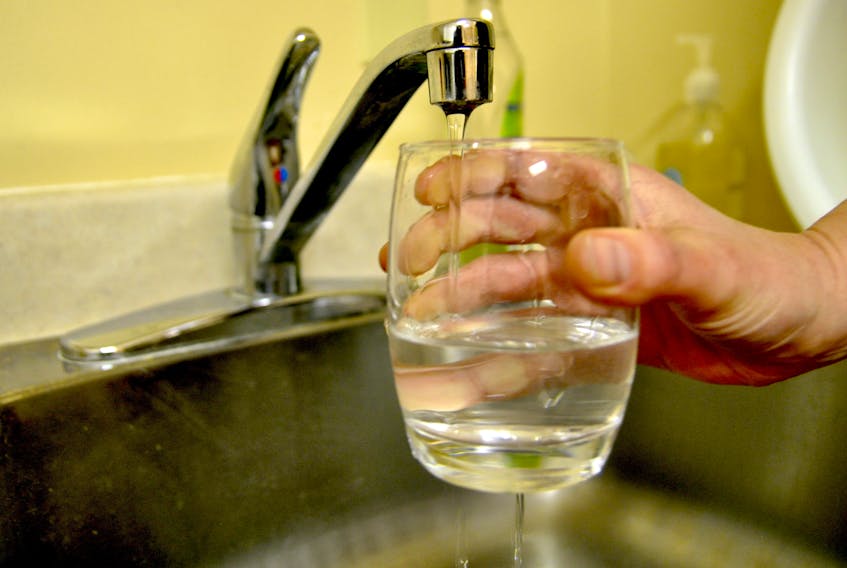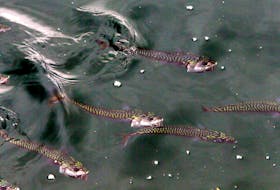PASADENA
The numbers have dropped a little but the Town of Pasadena is still eager to address a disinfectant byproduct issue with its water supply.
At a public meeting last fall, the town’s council discussed the high levels of trihalomethanes (THMs) detected in its water from the regular monitoring and testing done on it earlier in the year.
Trihalomethanes are byproducts created when chlorine reacts with organic material naturally found in water supplies. Health Canada has set acceptable levels for these disinfection byproducts, including haloacetic acids (HAAs), since long-term exposure to them has been linked to serious health issues.
While Pasadena is certainly not alone when it comes to communities within Newfoundland and Labrador that have levels of THMs and HAAs exceeding Health Canada’s standards, Pasadena is the largest centre with a high reading in the province.
Since that public meeting in November, the town has hired a consultant to look into the best way to reduce its levels.
Related stories
Pasadena, St. Paul’s among the towns grappling with unacceptable THM levels in its drinking water
MHA Scott Reid says he’d have no issue drinking Pasadena’s water
Discontinuation of new water treatment technology led to Milltown mayor's resignation
Newfoundland and Labrador approves drinking water disinfection method that doesn't create THMs
Mayor Gary Bishop said the town is still waiting on the consultant’s report, which the town had hoped to have by now.
In the interim, there is a little good news. Bishop said the most recent testing of Pasadena’s water has indicated a drop in the levels.
The latest readings of 150.75 micrograms per litre (parts per billion), taken last August by the Department of Municipal Affairs and Environment, are down from the 175 micrograms per litre, but are still above Health Canada’s acceptable levels of 100 micrograms per litre.
“It doesn’t matter if it’s 150 or 120, it’s still above the standard and we want to do something about it,” said Bishop. “The problem is we have to use too much chlorine.”
Not using as much chlorine to disinfect its water system would create a more imminent risk of drinking water that could cause gastrointestinal illnesses in the community. So, said the mayor, reducing chlorine levels is not the better option in the short term.
Bishop said there are alternatives to using chlorine and the town is awaiting the report on what would work best for the town.
An option being explored in pilot projects in eastern Newfoundland has involved the use of hydrogen peroxide. Bishop said that sort of system might be too costly to operate, let alone expensive to set up.
Another potential option is a system that uses charcoal, he said.
“That one is also expensive to install but is apparently not as costly to operate afterward,” he said.
The latest numbers
The Department of Municipal Affairs and Environment conducts an extensive quality assurance and quality control program prior to posting drinking water quality data online. The department follows an exceedance protocol for contaminant parameters such as arsenic. Communities are informed of any contaminant exceedances as soon as the exceedance is noted by the laboratory, typically within seven to 10 days of sampling.
The waiting period for posting data online from the date of sampling is generally two to three seasons, given the process. However, any health-related parameter exceedances are reported to communities as soon as the laboratory notifies the department.
Here are some highlights from western Newfoundland of the latest readings for THM levels as posted on the provincial government website. The numbers include the readings available last fall and the most recent ones.
Whose levels are up?
Lourdes
Supply: Victor’s Brook
Previous average reading: 223.25 micrograms per litre (February 2018)
Latest average reading: 235 micrograms per litre (August 2018)
Steady Brook
Supply: Wellfield and Steady Brook
Previous average reading: 158.5 micrograms per litre (March 2018)
Latest average reading: 210.50 micrograms per litre (August 2018)
Rocky Harbour
Supply: Gull Pond
Previous average reading: 152.25 micrograms per litre (February 2018)
Latest average reading: 165.75 micrograms per litre (September 2018)
Gillams
Supply: Meaters Pond
Previous average reading: 112 micrograms per litre (March 2018)
Latest average reading: 123 micrograms per litre (September 2018)
Meadows
Supply: Meaters Pond
Previous average reading: 101.25 micrograms per litre (February 2018)
Latest average reading: 102.22 micrograms per litre (September 2018)
Whose levels went down?
St. Paul’s
Source: Two Mile Pond
Previous average reading: 310 micrograms per litre (February 2018)
Latest average reading: 285 micrograms per litre (September 2018)
Pasadena
Supply: Blue Gulch Pond
Previous average reading: 175 micrograms per litre (March 2018)
Latest average reading: 150.75 micrograms per litre (August 2018)
McIvers
Supply: McIvers Brook
Previous average reading: 172 micrograms per litre (February 2018)
Latest average reading: 162 micrograms per litre (September 2018)
Cox’s Cove
Supply: Cox’s Brook
Previous average reading: 107 micrograms per litre (February 2018)
Latest average reading: 93.95 micrograms per litre (September 2018)*
* The latest readings for Cox’s Cove Brook indicate its THM levels have fallen below the maximum acceptable level since the previous readings.
Source: Department of Municipal Affairs and Environment









